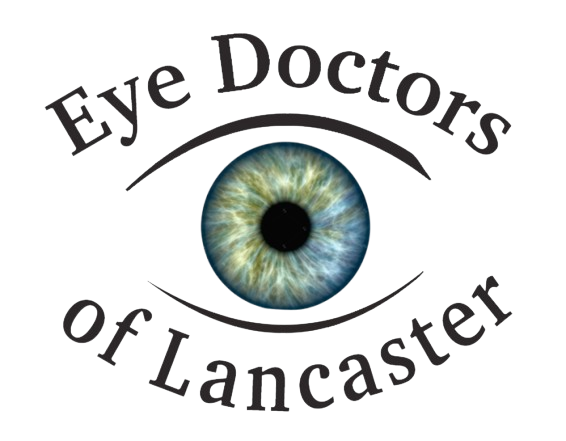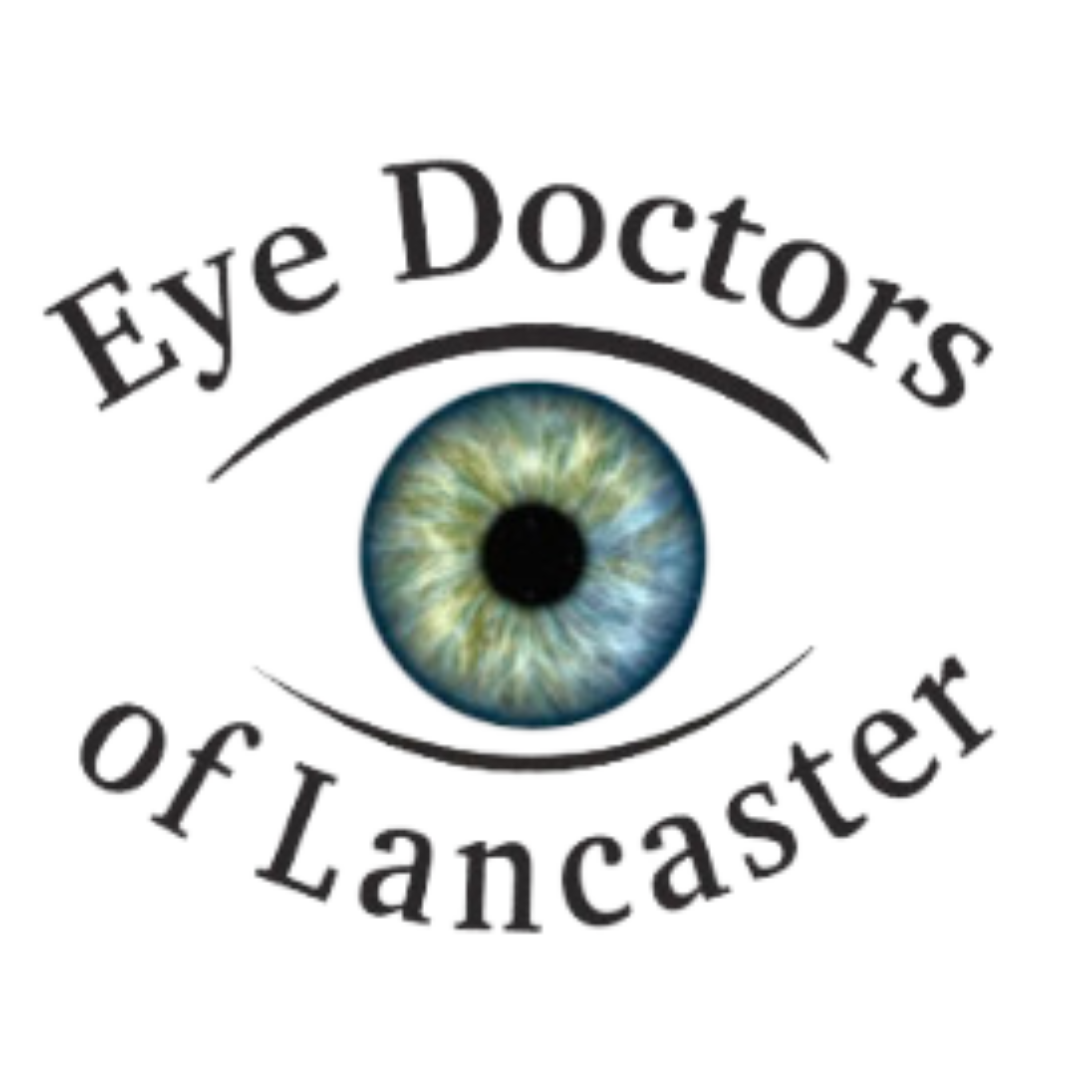
Advanced Technology IOLs
WORLD CLASS DOCTORS using CUTTING EDGE IOL TECHNOLOGY customized for YOU
The RxSight™ Light Adjustable Lens
Eye Doctors of Lancaster is proud to be the #1 most experienced provider of the Light Adjustable Lens in Central Pennsylvania. We have invested in this technology for several years and find that it offers our patients the most precise refractive results available for cataract surgery currently.
The RxSight™ Light Adjustable Lens (LAL) is the first and only intraocular lens that can be customized after cataract surgery. The LAL is made of a special photosensitive material that can be adjusted in response to ultraviolet (UV) light. This optimization is done by your eye doctor in the weeks following lens implantation through a series of non-invasive light treatments that take only a few minutes each. You will have the unique ability to adjust and preview your vision until it meets your personal desires and lifestyle requirements. The Light Adjustable Lens delivers superior vision outcomes that fixed, non-adjustable lenses cannot match. Ask your surgeon if the LAL is an option for you!
Our patients rave about the LAL!
Light Adjustable Lenses: Overview
Clear Vision with Cataract Surgery - Enhance Your
Quality of Life and
Safety!
When patients elect to have cataract surgery to remove the eye’s cloudy natural lens, they have a wonderful opportunity to reduce their dependence on glasses. Advanced Technology IOLs have evolved dramatically over the last few decades and can provide cutting-edge clarity and range of vision. Your surgeon is a refractive expert and would be happy to provide guidance about which Advanced Technology IOLs are most appropriate for you. Although no IOL technology can provide total freedom from glasses in all circumstances, patients who choose Advanced Technology IOLs can significantly reduce their dependence on glasses for most activities. This can enrich a patient's quality of life but also increase their safety. Older adults with bifocal or progressive glasses are 2.3 times more likely to fall than those with single-vision or no glasses. In fact, more than one in three falls can be attributed to prescription glasses like these in the elderly.
Astigmatism and Presbyopia
There are two primary refractive conditions that must be considered and effectively addressed during or after cataract surgery in order for a patient to experience clear vision–astigmatism and presbyopia. Each condition is discussed below.
Astigmatism
Astigmatism is a common vision problem that occurs when the cornea, the clear, curved surface at the front of the eye, is not perfectly round. Instead of being shaped like a ball, it might be more oval, like a football. This unusual shape prevents light from focusing evenly on the retina, which can cause blurry or distorted vision. People with astigmatism may have trouble seeing clearly at both close and far distances. To diagnose astigmatism, an eye doctor performs a simple eye exam that measures how light enters the eye and how well a person can see different images. Before cataract development, treatment for astigmatism involves wearing corrective lenses, such as glasses or contact lenses, which help to focus light properly on the retina. Surgery like LASIK may also be considered to reshape the cornea and improve vision in young patients who have not yet developed cataracts.
In preparation for cataract surgery, the level and orientation of astigmatism is precisely mapped by your surgeon using the techniques of keratometry and corneal topography. The team at Eye Doctors of Lancaster can also use a vision simulator to help demonstrate the effect of astigmatism measured in your eye and review treatment options with you. It is important to note that BASIC cataract surgery does NOT correct astigmatism, so employing one of the options below can be very helpful for patients with astigmatism. If astigmatism is not treated surgically, it will need to be corrected after surgery with glasses or contact lenses.
Presbyopia
The optics of a human eye are elegant and precise. A young, healthy eye with a clear, natural crystalline lens can provide an individual with clear vision both far away and up close. As a person ages, however, even if glasses were never needed for clear vision beyond arms’ length, almost all individuals around the age of 40 find that glasses become necessary for near work like reading a book, newspaper, cell phone or tablet. This condition is called presbyopia. Presbyopia is a loss of accommodation, the process through which the eye can change focus from far to near. When Basic cataract surgery is performed, the same phenomenon occurs and must be treated. If a Basic IOL is chosen, glasses or contact lenses will be necessary to treat presbyopia. If a patient desires to reduce dependence on glasses, Advanced Technology IOLs can be considered. The most common strategies to treat presbyopia with Advanced Technology IOLs include the use of Blended Vision with LALs, Extended Depth of Focus (EDOF) IOLs or Trifocal IOLs.
Treating Astigmatism During Cataract Surgery
Surgical treatment of astigmatism can either be performed on the cornea–the lens at the front of the eye–or incorporated into the intraocular lens (IOL) implanted during cataract surgery. Because the cornea is a living structure that can heal with some variability from one patient to another, techniques that surgically alter the corneal shape can vary in their effectiveness. “Corneal Relaxing Incisions” (CRI’s) are incisions of a specific length, depth and position made by your surgeon on the cornea depending on the amount of astigmatism to be treated. These incisions can be created manually with a microsurgical blade or by using a laser. PRK or LASIK is an alternative corneal-based laser treatment that can be used to treat residual astigmatism several months after cataract surgery.
IOL-Based Astigmatism Treatment
Most patients who choose to address astigmatism during cataract surgery prefer IOL-based treatment. These treatments generally provide better predictability and long-term stability than CRI’s. Astigmatism treatment in an IOL can either be fixed or adjustable.
The RxSight™ Light Adjustable Lens
The Light Adjustable Lens (LAL) is the most precise IOL-based treatment option for astigmatism. The use of any alternative fixed IOL for astigmatism relies on calculations performed by your surgeon. Even though these calculations are based on detailed measurements performed on each patient by our technical team before surgery, the calculations have inherent assumptions about how a patient will heal after surgery. The primary healing variables beyond your surgeon’s control are effective lens position and residual corneal astigmatism. Individual variations in these 2 factors from one patient to another can sometimes result in a less than desirable refractive outcome and cause blurry vision. In contrast, the LAL effectively accounts for both of these variables since light adjustments are performed after a patient heals. Adjustments are based on the actual healing of each unique patient rather than one’s predicted healing. This is why the LAL is approved by the FDA to treat levels of astigmatism more precise than any fixed Toric IOL. If quality of vision matters most to you, the Light Adjustable Lens may be right for you!
Fixed Toric IOL Options
A fixed IOL option that is very helpful for patients with moderate to high astigmatism at the time of cataract surgery is the Toric Intraocular Lens. This IOL, similar to prescription spectacles, has astigmatism correction, called cylinder, built into the lens. The amount of cylinder is chosen by the surgeon based on very precise measurements of a patient’s eye taken prior to surgery. This IOL can be implanted at the time of surgery and accurately aligned by the surgeon to help neutralize astigmatism and reduce a patient’s need for glasses post-operatively. It’s important to note that fixed Toric IOLs come in a variety of styles: Monofocal, Extended Depth of Focus (EDOF), and Trifocal (aka Multifocal). With any of these fixed IOL options, a patient may heal differently than predicted by the surgeon. If this occurs, glasses can still be used to sharpen vision during specific tasks or at specific distances.
Monofocal Toric IOL
A fixed monofocal Toric IOL is likely to provide better quality of vision than a Basic IOL at one focal point (or zone): distance, intermediate/arms’ length, or near. Glasses will be needed for clear vision in other zones. As an example, most patients who choose a monofocal Toric IOL elect a distance target. These individuals will very likely still need reading glasses for all activities within arm’s length.
Extended Depth of Focus (EDOF) Toric IOL for Astigmatism and Better Range of Vision
An EDOF toric intraocular lens (IOL) is a special type of fixed lens used to improve vision. It combines two important features: it treats astigmatism and provides a wider range of clear vision. This IOL has a special shape that corrects the uneven curvature of the cornea, helping to fix astigmatism. This IOL’s extended depth of focus also helps a person see more clearly in more than one zone, like at arm's length and at a distance, with less dependence on glasses. This lens works by focusing light in a way that extends the range of clear vision, so it’s not limited to just one spot. After cataract surgery, people with this lens may not need glasses for most activities, though reading glasses will likely still be needed for tasks up close. While an EDOF IOL can improve vision, it may come with some side effects uncommonly. Some people might experience glare or halos around lights, especially at night. Others may notice a slight reduction in contrast sensitivity, meaning it might be harder to see fine details in low light. A small number of people may also experience blurry vision. These side effects are usually temporary, but in some cases, they may require further treatment.
Trifocal Toric IOL for Astigmatism and Best Range of Vision
A trifocal intraocular lens (IOL) uses advanced technology called diffractive optics to provide far, intermediate and near vision to each eye. It significantly reduces the need for glasses at all distances and is a great advance in the field of refractive cataract surgery. Just like joint replacements, these IOL’s can enhance the lifestyle of patients but still have limitations when compared with the natural crystalline lenses that God created in each of us. One of the most widely implanted trifocal IOLs available today is called the PanOptix IOL. In clinical trials, when patients who received the PanOptix IOL were asked to describe how bothersome nighttime glare, starbursts or halos were, up to 20% reported “quite a bit” or “very much”. For these reasons, these IOL’s are not recommended for pilots or those that spend a significant amount of time driving, especially at night. Despite these side effects, the performance of the PanOptix IOL is quite impressive. When patients who elected the PanOptix were asked 6 months later if they had to do the surgery all over, over 99% of patients stated they would choose the same IOL again.
Blended Vision (also known as Monovision)
One option to treat presbyopia is called blended vision. Blended vision is a strategy that offsets the refractive target in each eye so that the eyes complement each other. One eye is set to see well far away (television, driving), and the other is set for near or arms’ length (reading a book or computer screen). This approach is most effective using the Light Adjustable Lens (LAL) since precise adjustments can be made after surgery. This “fine tuning” is unique to each patient and customized to an individual’s liking while they “test drive” their new vision after cataract surgery. Although uncommon, if a patient has LALs implanted and finds they dislike blended vision during the “test drive” process, the LALs can be adjusted in both eyes to provide outstanding distance vision. In this scenario, depth perception and quality of vision at distance are maximized, which benefits patients especially during outdoor activities like sports or driving. Patients who elect a distance refractive target in both eyes do well using over-the-counter reading glasses for near work.

